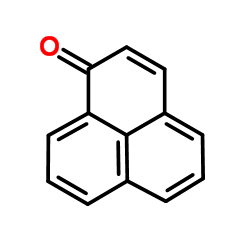Sensitized photooxidation of thyroidal hormones. Evidence for heavy atom effect on singlet molecular oxygen [O2(1Deltag)]-mediated photoreactions.
Sandra Miskoski, Arnaldo T Soltermann, Patricia G Molina, Germán Günther, Antonio L Zanocco, Norman A García
Index: Photochem. Photobiol. 81(2) , 325-32, (2005)
Full Text: HTML
Abstract
Thyronine derivatives are essential indicators of thyroid gland diseases in clinical diagnosis and are currently used as standards for developing ordinary biochemical assays. Photooxidation of gland hormones of the thyronine (TN) family and structurally related compounds (TN, 3,5-diiodothyronine,3,3',5-triiodothyronine and 3,3',5,5'-tetraiodothyronine or thyroxine) was studied using rose bengal, eosin and perinaphthenone (PN) as dye sensitizers. Tyrosine (Tyr) and two iodinated derivatives (3-iodotyrosine and 3,5-diiodotyrosine) were also included in the study for comparative purposes. Irradiation of aqueous solutions of substrates containing xanthene dyes with visible light triggers a complex series of competitive interactions, which include the triplet excited state of the dye (3Xdye*) and singlet molecular oxygen [O2(1Deltag)]-mediated and superoxide ion-mediated reactions. Rate constants for interaction with the 3Xdye*, attributed to an electron transfer process, are in the order of 10(8)-10(9) M-1 s-1 depending on the dye and the particular substrate. The photosensitization using PN follows a pure Type-II (O2(1Deltag) mediated) mechanism. The presence of the phenolic group in Tyr, TN and iodinated derivatives dominates the kinetics of photooxidation of these compounds. The reactive rate constants, k(r), and the quotient between reactive and overall rate constants (k(r)/k(t) values, in the range of 0.7-0.06) behave in an opposite fashion compared with the overall rate constants and oxidation potentials. This apparent inconsistency was interpreted on the basis of an internal heavy atom effect, favoring the intersystem-crossing deactivation route within the encounter complex with the concomitant reduction of effective photooxidation.
Related Compounds
| Structure | Name/CAS No. | Molecular Formula | Articles |
|---|---|---|---|
 |
phenalenone
CAS:548-39-0 |
C13H8O |
|
Enhanced Indirect Photochemical Transformation of Histidine ...
2015-05-05 [Environ. Sci. Technol. 49 , 5511-9, (2015)] |
|
Fatty acids and vitamins generate singlet oxygen under UVB i...
2012-02-01 [Exp. Dermatol. 21(2) , 135-9, (2012)] |
|
[Mechanism of photosensitized luminescence of singlet oxygen...
2010-01-01 [Biofizika 55(3) , 389-93, (2010)] |
|
A comparative kinetic study on the singlet molecular oxygen-...
2003-07-01 [J. Pept. Res. 62(1) , 11-8, (2003)] |
|
Mechanism of the photochemical process of singlet oxygen pro...
2011-03-07 [Phys. Chem. Chem. Phys. 13(9) , 4138-48, (2011)] |